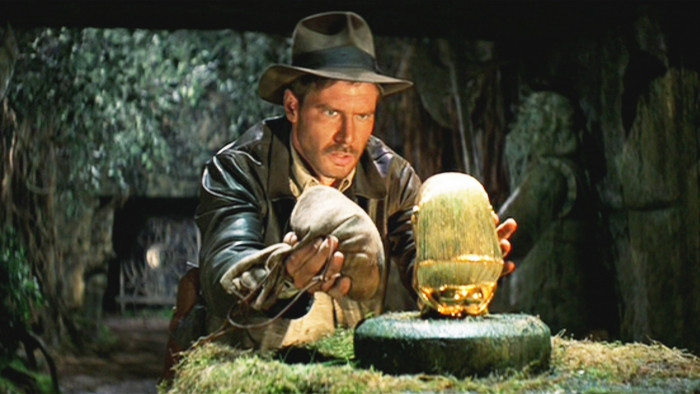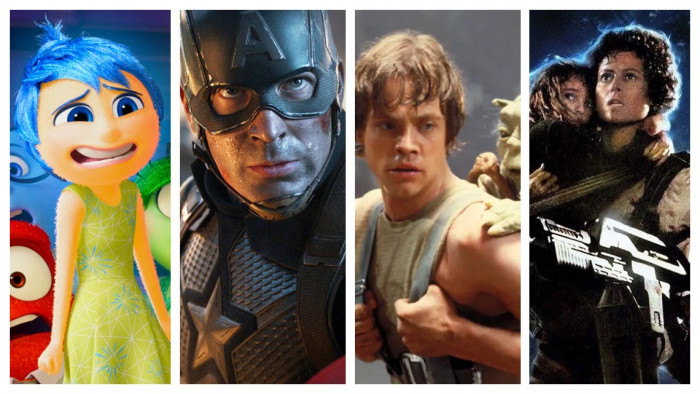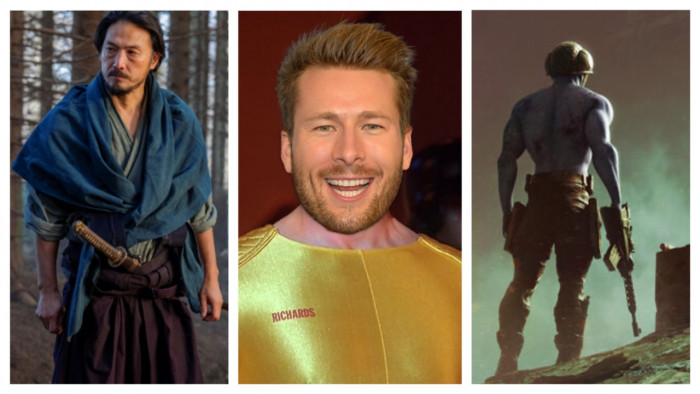The sun is out on a pleasantly autumnal September afternoon, and the co-writer of Taken is on the phone to ShortList. “I don’t know who you are, but if this article turns out to be a mash of sh*t, I will hunt you down,” says Robert Mark Kamen. “I’ll burn your f*cking house down, I’ll poison your dog, I’ll blow your car up. Then I’ll kill you.”
He’s not serious (we hope); he’s merely demonstrating the simple power that comes with threatening a stranger over the phone with all the flair you’d expect from the man responsible for penning that speech. You know. The one where that nice man from Love Actually matter-of-factly explains his planned response to his daughter’s kidnapping by Albanian people-traffickers, before destroying half of Paris in his quest to get her back. The one that’s racked up a kajillion hits on YouTube, been spoofed on an episode Family Guy and that you can rattle off in a questionable Northern Irish accent. “I sell T-shirts at my vineyard,” says Kamen. “The one that says, ‘I will find you, I will kill you’: that’s a popular one.”
But what did Liam Neeson himself make of that iconic dialogue when he first read it? “I remember saying to the director, ‘There’s too much of the word ‘skills’,’” he admits. “‘I have a certain set of skills, skills, skills… Can we not just cut some of them out?’ Luckily, they didn’t listen to me.”
An unlikely classic
These days, it’s easy to forget just how improbable the creation of Taken and the birth of Liam Neeson: Professional Throat-Puncher was. It’s one thing for a knuckle-cracking Euro-thriller to cast Neeson – one of the most respected actors in the world – in a role Steven Seagal could have wheezed his way through. It’s another for him to deliver some of the most intense beat-downs and blood-curdling threats in recent cinematic memory. Then it really is something else when this little film, released in 2008, racks up a whopping £135m worldwide with its theatrical release alone – recouping roughly 10 times its production budget. It wasn’t just a hit, it was a phenomenon. It had received a luke-warm reception in Europe and gave a good performance in some East Asian territories, but nobody expected the film to take off as it did in the US – least of all its star.
“Was I surprised? In a word, yes,” says Neeson.
“I remember my nephews living in both Ireland and England calling me up saying, ‘Uncle Liam, we love your movie Taken.’ I said, ‘Taken? It’s not out yet.’ But it turned out you could download it [illegally], courtesy of some f*cking technician in Korea. I thought that was the end of that, we were sunk. How wrong I was. Before long, it wasn’t just young sporty jock guys coming up to me about the film – it was mothers and grandmothers. That’s the power of word of mouth. Unfortunately, a few people in America were saying they were glad their daughters saw it, because they didn’t want them going to Europe.”
But, detractors at the Parisian tourist board aside, where did this unlikely monster hit come from? If anyone should bear the responsibility, it has to be one-man action factory Luc Besson. After spending the Nineties noisily knocking on Hollywood’s door with Leon, The Fifth Element and his ill-fated The Messenger: The Story Of Joan Of Arc, Besson returned to his native France with a plan. With his new production company EuropaCorp, he was going to resurrect the European action film – clinging to the fact that, for all its traditional arthouse reputation, French cinema had once turned out some of the most culturally significant thrillers in film history. And it was going to do it again.
Besson recruited a generation of stylish shooters who looked to his Eighties work for inspiration. There was Louis Leterrier, who kicked off the Jason Statham-starring Transporter series, Pierre Morel, who made the pioneering parkour flick District 13, and Olivier Megaton, director of The Transporter 3 (who would also go on to direct the forthcoming Taken 2). All were unpretentious action-film geeks.
“It’s definitely the Luc Besson effect,” says Film 2012 regular Chris Hewitt. “There’s a whole generation of French directors who have worked with him.
They bring something fresh and vital, and combine traditions incredibly well. It’s clear they’ve grown up watching Hollywood films, but they mix in Hong Kong action with Hollywood techniques.” So, we have the hardcore credentials and sense of style imported direct from Kowloon, but who’s bringing the Hollywood pizazz? Step forward Robert Mark Kamen who, after creating The Karate Kid franchise in the Eighties, has been writing with Besson for the past15 years.
“We’re the longest-running act in showbusiness,” says Kamen. “Our strengths are: I can write in English, and he’s a f*cking genius. We don’t like complicated action films. The films we do, be it Unleashed or The Transporter series or Taken, have no CGI, and it’s always a simple storyline. It’s always focused on an individual. There’s never larger government issues, there’s never nefarious plots. It’s the simplest way of telling a story.”
All the pieces were in place. Besson had a mini-studio producing rock-solid action blockbusters, and a writer who got that not every thriller had to include a grand statement on the war on terror. So how did the man with the saddest eyes in Hollywood get involved?
The big man
“I’m surprised it took so long,” says Hewitt of Neeson’s skull-cracking skills. “If you look at his career, he has played tough guys before, but he’d never done it to this extent. He’s clearly a big guy, he can handle himself on screen, and he’s got this great presence. He’s been compared to Lee Marvin, who’s one of his heroes, and finally he got the chance to do this Lee Marvin-esque role.”
And if you thought meeting Neeson would be akin to meeting a combination of a softly-spoken politician and a kindly uncle (he was Oskar Schindler, for crying out loud), you’d be well advised to factor in Hewitt’s Lee Marvin analogy. In the flesh, Neeson is huge, swears like a particularly foul-mouthed sailor and – we swear we’re not making this up – spent the entire interview with a toothpick in his mouth.
“It was just one of those fortuitous things,” he says of receiving the Taken script. “My agent at the time sent it, and I thought, ‘F*ck, this would be great to do.’ I love all that physical stuff, and I don’t often get a chance to do it. I thought, ‘Aw, man this is sick.’ A nice simple story. And three months in Paris. My agent called Luc Besson, and he asked me if I liked the script, and I said, ‘You might have trouble seeing me in that role, but I can do it. I keep fit.’”
Neeson’s experience as a boy growing up in Northern Ireland, taking up boxing and keeping his head down as The Troubles raged around him, meant he had a gallery of hardmen to draw on when creating Bryan Mills’s no-nonsense, deadly persona. “There were lots of tough guys. A lot of them are dead now. It was little bits of attitude. You’d see how somebody sits, looking at you, that would stick with you. There would just be something about their demeanour.”
But let’s face it – Neeson was in his late fifties when Taken was made. If half the freshness of his casting was seeing an Oscar nominee karate-chopping bad guys like he was an Eighties action bruiser, the other half was surely seeing a non-steroidal man your dad’s age authentically laying a small army of stuntmen to waste. “I keep pretty fit as a rule, but for these films you have to up the ante quite a bit. One of the things you don’t expect about these fights is that it’s all about relaxing and not being so stiff. Because when the camera’s turning, you’re naturally tense, and you don’t want that. You’re constantly saying to yourself, ‘Just relax, breathe, you know these moves, breathe – boom, boom, boom.’ Your every move needs to be very relaxed and contained.”
Authenticity was also key when it came to building that seminal character. “I work very, very closely with the stunt coordinators,” says Neeson. “In Taken 2 we had this wonderful guy, Alain Figlarz, who’s an ex-special-forces operative, and he’s now a fight choreographer. I relied on him heavily – ‘OK, what do you do with this gun if you were going into a room for the first time? Where do you look, where do you move?’ I just copied what he did – what his training was as a soldier.”
However, Neeson is quick to point out that Taken wouldn’t have worked if his character was just a faceless killing machine. “It was very relatable,” he says. “My theory is that we went through this huge financial crisis where our bankers and our politicians – our so-called leaders – were f*cking shafting us. People were scared and nervous. At times like that, people want entertainment, and in Taken they saw a guy who didn’t drive flashy cars. He was just a regular guy who’s trying to be a dad. If he gets in trouble, he’s not going to call the police, he’s going to f*cking do something about it himself. I think that really appealed to the hurt that people were feeling around the world with what was happening. It just touched a nerve.”
It’s this relatable component that is key to Taken’s transition from solid thriller to modern classic. For all the awesome leather jackets and quotable lines (“Your arrogance offends me”), the film taps into something much deeper than just our collective appreciation for a resourceful guy who knows some basic judo. “The truth is that it’s a convention that’s been used over and over,” says Kamen.
“If my child were run over or taken, what would I do? I would do everything in my power to rescue them, or avenge them. That’s the primal urge of all parents – whether you’re a human being or a tiger in the bush. You would do anything. If you start with that, then go for balls-out action, you’re good.” Of course, if you’re going to play on such instinctive cognitive urges, having a guy on board who’s already spent 15 years playing a string of fathers and mentors isn’t just casting a known face – it’s the final piece of a precision-tooled machine destined for millions of DVD collections.
Moving on
It’s this growing mountain of Blu-rays and DVDs being shifted that made Taken 2 inevitable. Thankfully, they haven’t gone down the lazy route of having Mills’s daughter kidnapped again. Instead, and far more interestingly, the primal parental themes of the first film have been developed and, if anything, intensified. “Our villain, played by Rade Serbedzija, is the father of one of the first film’s villains,” explains director Megaton. “His revenge drives the action. Albanian culture is one of vengeance and feud, so again we’re tapping into those primal feelings. Also, in the first film, Mills kills 26 people during his search for his daughter. He’s now tired of all this killing. For me, it was very important – we had to give these guys some depth.”
Besson. Megaton. Kamen. Neeson. They don’t know who you are. They don’t know what you want. But they have a very particular set of skills; skills they have acquired over very long careers. Skills that make them excellent at entertaining people like you. Skills like harnessing primal parental drives, and making an unlikely action hero out of Northern Ireland’s most soulful and loved actor. If you watch Taken 2, that may well be the end of it. They won’t look for you, they won’t pursue you. But if you don’t… Good luck.
Taken 2 is at cinemas nationwide now
Latest
Related Reviews and Shortlists


The 10 best war movies of the 21st century









